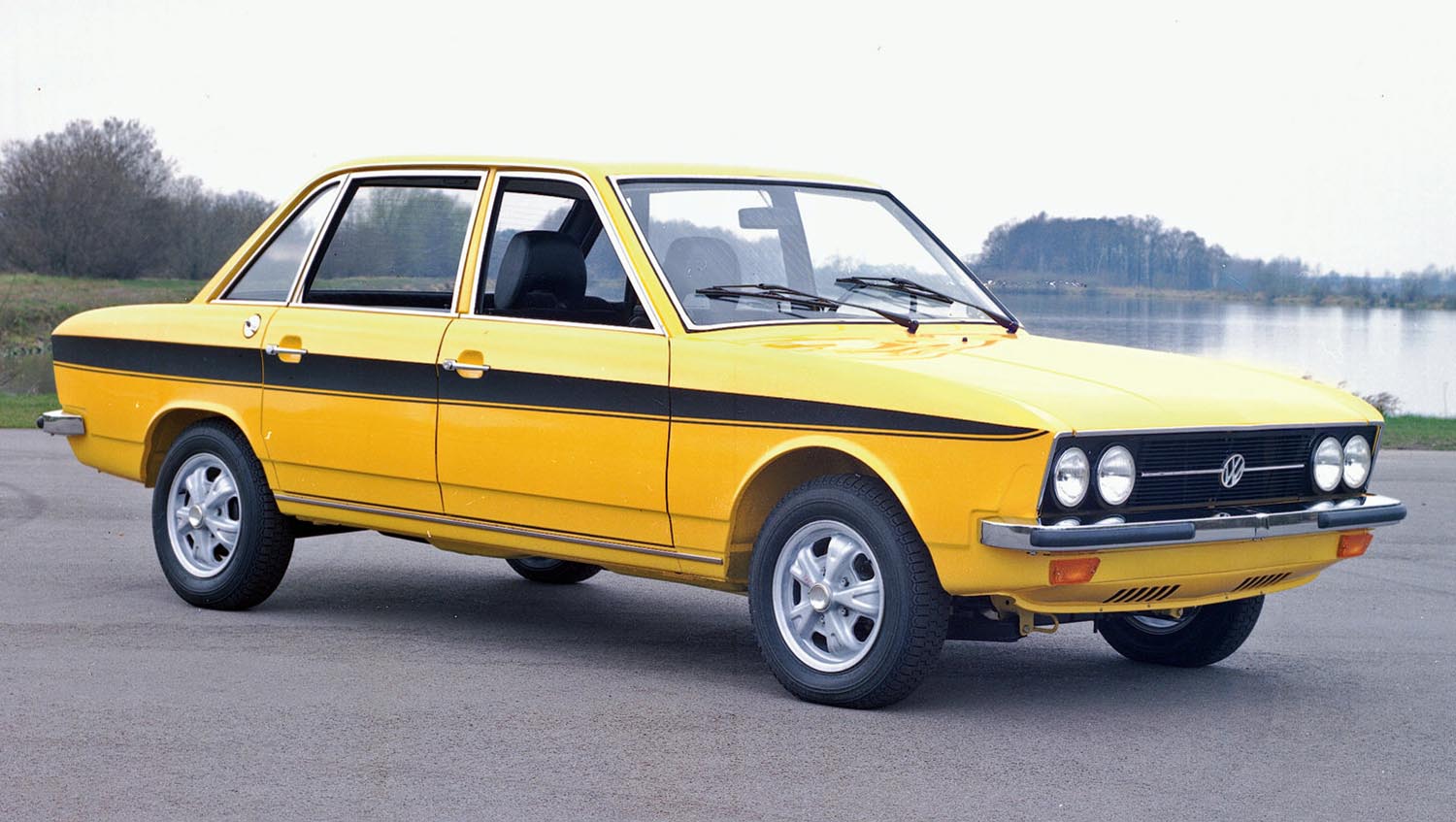
The 1970 Volkswagen K70 represented a crucial turning point in Volkswagen’s history. Developed by NSU and adopted by VW just before its launch, the K70 introduced front-wheel drive and a front-mounted, water-cooled engine. These innovations set the foundation for a new generation of Volkswagens that moved away from the company’s air-cooled, rear-engine past.
From NSU Roots to Volkswagen Innovation
Originally designed by NSU as a sibling to the futuristic Ro 80, the K70 was conceived to offer similar modern styling and engineering in a more conventional package. Its name, derived from “Kolben” for piston and “70” for its horsepower rating, emphasized its distinction from NSU’s rotary-powered models.
In 1969, just as the K70 was ready for production, Volkswagen acquired NSU and took control of the project. Recognizing its potential to modernize the brand’s image, VW launched the car under its own badge the following year. It became Volkswagen’s first model with front-wheel drive and water cooling, a quiet revolution within the company.
Design and Technical Breakthroughs
The Volkswagen K70’s design reflected a new era of automotive thinking. Clean lines, a boxy silhouette, and a wide cabin layout made it both practical and contemporary. It departed from the rounded Beetle aesthetic and introduced design cues that influenced later Volkswagen sedans, including the Passat.
Inside, the car offered generous space, modern ergonomics, and large windows that enhanced visibility. These features positioned the K70 as a comfortable and forward-thinking family sedan, distinct from the simplicity of VW’s older models.
Powertrain and Performance
At its heart, the 1970 K70 featured a 1.6-liter inline-four engine producing 75 PS (55 kW) and around 125 Nm of torque. Power was delivered to the front wheels through a four-speed manual transmission, giving the car a smooth and predictable driving character. Its layout provided balanced handling, while the water-cooled setup improved thermal efficiency and engine reliability.
In 1973, an upgraded 1.8-liter engine raised output to 100 PS, enhancing performance and refinement. Though not a sports sedan, the K70 delivered solid dynamics for its era, signaling Volkswagen’s growing emphasis on drivability and engineering precision.
Challenges and Market Reception
Despite its forward-thinking design, the K70 struggled to gain traction in the marketplace. Many buyers associated it with NSU’s troubled Ro 80, whose rotary engine suffered reliability issues. Moreover, early K70 models faced corrosion problems that hurt long-term durability and resale value.
However, the K70’s true impact lay beneath its modest sales numbers. It introduced technologies and design philosophies that shaped Volkswagen’s future lineup, influencing the development of the Passat, Golf, and other front-engine, water-cooled models that would define the brand for decades.
Legacy and Heritage
Today, the Volkswagen K70 stands as an overlooked milestone in automotive history. It bridged the gap between two eras, combining NSU innovation with Volkswagen’s practicality. While few examples have survived due to rust issues, enthusiasts recognize it as the model that redefined Volkswagen’s engineering path.
Engine Specs and Performance Summary
The 1970 Volkswagen K70 featured a 1.6-liter four-cylinder engine with 75 PS and a top speed of around 160 km/h. Its front-wheel-drive configuration and water-cooled design marked a major departure from the Beetle’s architecture, setting the stage for modern Volkswagens.
Summary
The 1970 Volkswagen K70 may not have achieved commercial success, but its influence was profound. It reintroduced Volkswagen as a brand ready to innovate and evolve, paving the way for models like the Passat and Golf. In hindsight, the K70 was more than a car, it was the blueprint for Volkswagen’s modern identity.
Disclaimer: Content on this site is for informational purposes only. Vehicle specs, pricing, and availability may change. Always verify details with official sources before making decisions. Opinions are those of the authors.
Source: Volkswagen
